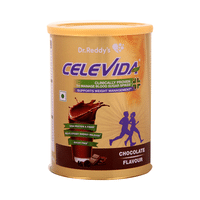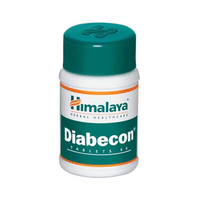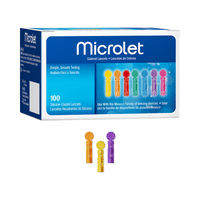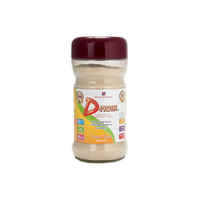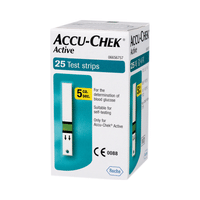OneTouch Ultra Test Strip (Only Strips)
(50 Test Strips in box)
Rs. 1445
Rs. 1445
OneTouch Ultra Test Strip (Only Strips)
(50 Test Strips in box)
Available in other variants
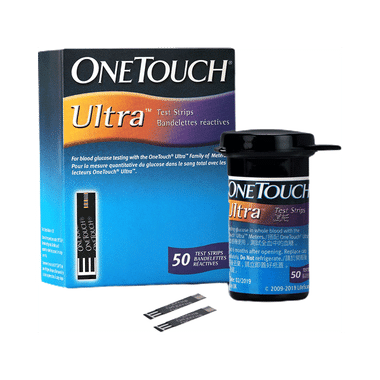
Product Details
OneTouch Ultra Test Strips | Blood Sugar Test Machine Testing Strips | Global Iconic Brand | For use with OneTouch Ultra 2 Glucometer & OneTouch Ultra Easy GlucometerOneTouch Ultra Test Strip
LifeScan is a world leader in blood glucose monitoring – globally more than 20 million people depend on our iconic OneTouch brand products to help them manage their diabetes. The OneTouch brand is the No.1 recommended brand of glucometer by diabetologists in India, according to a survey conducted in 2023 with 150 diabetologists in India.
Only OneTouch Ultra test strips can be used with the OneTouch Ultra 2 & the OneTouch Ultra Easy blood sugar testing machines. Diabetologists in India agree OneTouch glucometers are simple to use and give accurate and reliable results*.For any product related query or free registration of your product for warranty, please reach us on 1800-22-55-44 from Monday to Sunday - 8am to 8pm. Or Email us on : [email protected]. You can also register your meter for warranty on www.onetouch.in*As per a survey conducted in India in 2020 with 150 Diabetologists.
Uses: It is used to measure blood glucose concentration.
Product Specifications and Features:
Compatible With:
OneTouch Ultra strips to be used with OneTouch Ultra glucometer only
Directions for Use:
Safety Information:
Quick Tips:
Frequently Asked Questions
Q. Can blood sugar strips be reused?
No. Blood glucose test strips are for single use only. Do not reuse a test strip, as it may not provide the appropriate results. It is strongly advised to always discard a test strip after every use.
Q. What are the benefits of glucometers?
It is well known that testing blood glucose levels with a glucometer at home is one of the best ways to manage diabetes. It can help you to test your blood glucose at any time of the day and anywhere. Using a portable glucometer is the best way to test glucose when travelling. Charting of blood glucose levels becomes easy with glucometers, especially with devices having memory options to store previous readings. These on-time blood glucose monitors can help you to keep your blood glucose level in check and better manage diabetes.
Q. What is a normal glucometer reading?
According to the American Diabetes Association, the fasting or preprandial blood glucose levels for people with diabetes should lie between the range of 80 – 130 mg/dl and postprandial (1-2 hours after meals) should be less than 180 mg/dl. However, the range mentioned in your glucose monitor may be a little different. So, you need to speak to your doctor to calibrate the results with your lab reports.
Q. How do blood glucose monitors work?
Diabetes devices or glucometers test the amount of glucose in the blood. The test strips present in glucometers contain an enzyme called glucose oxidase. This enzyme reacts with glucose in the blood and sends the result as an electronic signal displayed on the monitor.
Q. How often should you test your blood glucose with a glucometer?
If you have type 1 diabetes, you may need to check your blood glucose levels several times a day (pre and post-meals, before and after exercise) or as advised by your doctor. Whereas, if you have type 2 diabetes, the frequency of monitoring your sugar levels might be based on the severity of the condition, which can be several times a day, once a day, or thrice a week. Therefore, it would be best to consult your doctor about how often you should test your blood glucose.
Warranty Info (if applicable)
To be used within six months of opening the test strip vial.
LifeScan is a world leader in blood glucose monitoring – globally more than 20 million people depend on our iconic OneTouch brand products to help them manage their diabetes. The OneTouch brand is the No.1 recommended brand of glucometer by diabetologists in India, according to a survey conducted in 2023 with 150 diabetologists in India.
Only OneTouch Ultra test strips can be used with the OneTouch Ultra 2 & the OneTouch Ultra Easy blood sugar testing machines. Diabetologists in India agree OneTouch glucometers are simple to use and give accurate and reliable results*.For any product related query or free registration of your product for warranty, please reach us on 1800-22-55-44 from Monday to Sunday - 8am to 8pm. Or Email us on : [email protected]. You can also register your meter for warranty on www.onetouch.in*As per a survey conducted in India in 2020 with 150 Diabetologists.
Uses: It is used to measure blood glucose concentration.
Product Specifications and Features:
- For use with: Only OneTouch Ultra test strips can be used with the OneTouch Ultra 2 & the OneTouch Ultra Easy blood sugar testing machines
- No.1 recommended brand by Diabetologists: The OneTouch brand is the No.1 recommended brand of glucometer by diabetologists in India. *As per a survey conducted in India in 2023 with 150 Diabetologists
- Accuracy you can trust: Diabetologists in India agree OneTouch glucometers are simple to use and give accurate and reliable results*
- Global iconic brand: OneTouch range of products is used by consumers across 65+ countries including USA, Germany, Japan and India
Compatible With:
OneTouch Ultra strips to be used with OneTouch Ultra glucometer only
Directions for Use:
- The first step is washing the hands with soap and water and pat-drying them with a towel. You can also use an alcohol swab to clean your finger before testing but ensure the fingertip is completely dry before you test
- Remove the diabetes test strip from the box of strips. Insert it into the slot on the glucometer just before you prick your finger
- Next, use a clean lancet (a device that holds the needle) or insert a clean needle in the lancet, which can help you to prick the end of your finger
- Prick the side of your fingertip and wait till blood oozes out. Wipe off the first drop gently and then put a drop or two onto the designated place on a test strip attached to the glucometer
Hold a clean cotton pad or gauze on the prick site to stop blood flow. Apply pressure on the area of the insertion until the bleeding stops
- Your blood glucose level will appear on the metre’s display. Note down your readings as it helps you to monitor your glucose levels from time to time
- Repeat this procedure every time you test your blood glucose level
Safety Information:
- Read the manual/instruction leaflet carefully before use
- Store in a cool and dry place, away from sunlight
- Keep out of reach of children
- Each strip is for single use only
- Dispose of the used strips properly
- Do not use if the expiry date has passed
Quick Tips:
- Check your glucometer product name before buying the test strips
- For in-vitro diagnostic use only
- Store in a capped vial in a cool and dry space between 4-30℃
- The test strip is for single use only. Never reuse
- Refer to the manual for the details before using this product
- Do not take any medical decision without consulting a doctor
- Always discuss your results with a registered medical practitioner
Frequently Asked Questions
Q. Can blood sugar strips be reused?
No. Blood glucose test strips are for single use only. Do not reuse a test strip, as it may not provide the appropriate results. It is strongly advised to always discard a test strip after every use.
Q. What are the benefits of glucometers?
It is well known that testing blood glucose levels with a glucometer at home is one of the best ways to manage diabetes. It can help you to test your blood glucose at any time of the day and anywhere. Using a portable glucometer is the best way to test glucose when travelling. Charting of blood glucose levels becomes easy with glucometers, especially with devices having memory options to store previous readings. These on-time blood glucose monitors can help you to keep your blood glucose level in check and better manage diabetes.
Q. What is a normal glucometer reading?
According to the American Diabetes Association, the fasting or preprandial blood glucose levels for people with diabetes should lie between the range of 80 – 130 mg/dl and postprandial (1-2 hours after meals) should be less than 180 mg/dl. However, the range mentioned in your glucose monitor may be a little different. So, you need to speak to your doctor to calibrate the results with your lab reports.
Q. How do blood glucose monitors work?
Diabetes devices or glucometers test the amount of glucose in the blood. The test strips present in glucometers contain an enzyme called glucose oxidase. This enzyme reacts with glucose in the blood and sends the result as an electronic signal displayed on the monitor.
Q. How often should you test your blood glucose with a glucometer?
If you have type 1 diabetes, you may need to check your blood glucose levels several times a day (pre and post-meals, before and after exercise) or as advised by your doctor. Whereas, if you have type 2 diabetes, the frequency of monitoring your sugar levels might be based on the severity of the condition, which can be several times a day, once a day, or thrice a week. Therefore, it would be best to consult your doctor about how often you should test your blood glucose.
Warranty Info (if applicable)
To be used within six months of opening the test strip vial.
This product is non-returnable.













